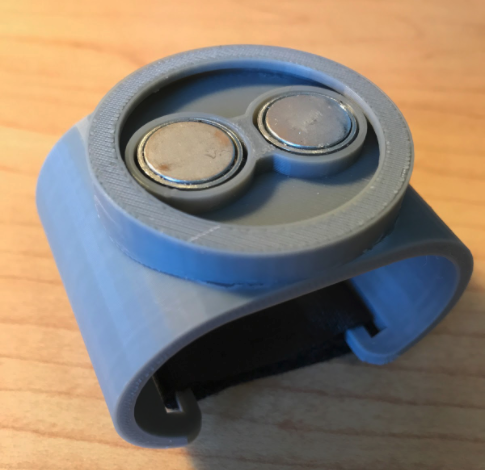Touch

The Project
Capacitive touch screen devices are ubiquitous and a smartphone is a necessity for many people to perform their job, play with their children or otherwise interact with their devices. For able bodied persons, it is intuitive to use the latest capacitive touch devices. Fingers have the capacitive properties to interact with touch screens with high precision. For people with upper limb amputations, there is a need for a way to accurately emulate the properties of the human fingers built into their prosthetic. After several conversations with a bilateral upper limb amputee, it was determined that the greatest need is for a device that interacts with capacitive touchscreens without the use of a stylus which requires charging and is easily forgotten when leaving the house for the day. The motivation for this project was to provide double upper limb amputees with the means to interact with capacitive touchscreens directly through their prosthetic device without the use of a stylus and with greater ease. —
The Design
The design is comprised of two main components; a wristband coupled as a phone holder and a “fingertip” that interfaces with capacitive touch screen of phones and tablets. In addition, a special phone case is required to allow for proper interfacing with the wristband.
Touch
This design is a finger tip made of conductive silicone wrapped in copper tape reinforced with a 3D printed bracket that fits snugly to the user’s prosthetic fingertip. This component pulls capacitance from the user’s finger and allows for the surface to disrupt the electrical field of the phone screen the same way a fingertip would. On transradial double arm amputee this tip would have to be connected to their upper arm where there is skin to pull the capacitance from. The 3D printed bracket provides a structural support to the soft conductive silicone. In addition, the way the band wraps around the finger ensures a tight fit to the prosthetic. Another solution was to use the same reinforced 3D printed bracket with Nanotips TAPS adhered to the bracket. This solution makes use of Nanotips TAPS product which is a sticker that is meant to adhere to gloves to make them usable with touch screens. This solution is unpowered as the Nanotips are engineered to work with a capacitive screen on its own. The purpose of having two solutions for TOUCH was to demonstrate the functionality provided by using a material that did not need to be powered or connected to the user’s arm.
Wristband
A 3D printed band that magnetically attaches to the phone and allowing for rotation of the device on the wrist was created. The wristband is secured to the wrist with a Velcro strap that tightens on the inner surface of the wrist. The band itself is comprised of three separate components. The first component is the wristband that is uniquely dimensioned to the user and 3D printed from ABS plastic. This wristband has four holes in it that are used to lock the phone into two positions; a horizontal and longitudinal position.
